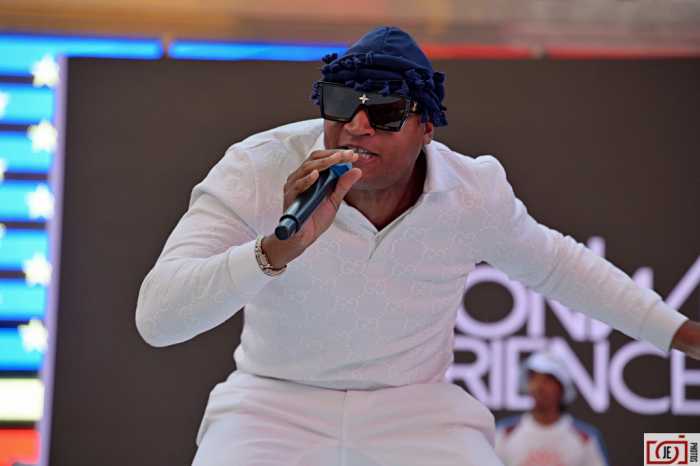Mug shots of the four women wrongly convicted in the 1990s San Antonio child sex abuse case, in which they spent nearly two decades in prison. | SOUTHWESTOFSALEM.COM
Sometimes justice is severely delayed, but finally arrives.
On November 23, seven of the nine judges of the Texas Court of Criminal Appeals, the state’s highest criminal bench, announced agreement that the felony child abuse and indecency convictions of four lesbians arising out of alleged incidents in the summer of 1994 must be set aside.
A majority of the panel concluded the women had succeeded in proving their innocence, while two members of the court concurred to the extent of finding that the women would not have been convicted if newly available scientific evidence had been presented to the jury.
Kristie Mayhugh, Elizabeth Ramirez, Cassandra Rivera, and Anna Vasquez, who came to be known as “The San Antonio 4,” fought for more than two decades to vindicate their innocence, being championed by investigative journalists and a documentary filmmaker. As revealed in the court’s opinion, they were framed by a vengeful brother-in-law seeking to use spurious child abuse charges as evidence in a hotly contested child custody dispute.
Court demolishes child sex abuse charges that kept four lesbians in jail for years
Judge David Newell wrote the opinion for the court, joined in full by Judges Cheryl Johnson and Bert Richardson, and in part by Judges Sharon Keller and Michael Keasler to the extent of the finding that the new evidence would have led to acquittal. The concurring opinion was by Judge Elsa Alcala, who was joined by Judge Lawrence Meyers. Together, Newell, Johnson, Richardson, Alcala, and Meyers went beyond finding that the new evidence would have resulted in an acquittal and concluded that, in fact, the four women had proved their innocence.
“We are asked to decide whether the newly available evidence of innocence undermines the legally sufficient, but hard-to-believe version of events that led to the convictions of these four women,” Newell wrote in his opinion. “We hold that it does and that these four women have unquestionably established that they are innocent of these charges.”
The two opinions from the court rehash the allegations, testimony, and factual findings at great length. What the case boils down to is that an ex-husband seeking to win a custody dispute intimidated his two young daughters, aged seven and nine, into inventing a fantastical story of sexual assault at the hands of their mother’s lesbian sister, the sister’s partner, and two other women (partners) who were their friends.
The girls had been left with their aunt for a week, and the father evidently hoped to use the concocted stories as evidence against their mother’s fitness in the custody dispute. It later came out that the father had brought similarly bogus charges of sexual assault against other individuals and that his mother, the children’s grandmother, may also be implicated in how the false allegations were hatched.
The case against the four lesbians occurred against a backdrop of national hysteria in the 1980s and ‘90s about child abuse, with some prosecutions embracing weird notions of satanic cults and lurid rituals ensnaring many innocent adults, particularly operators of child-care centers. “Expert witnesses” were sometimes presented, purporting to be able to determine whether children were recounting these stories accurately. The most egregious cases did not involve eyewitness testimony by adults of actual sexual assaults, and many of the “experts” who testified were later exposed as having relied on faulty science or engaged in suggestive interviewing techniques that telegraphed to impressionable youngsters what the questioners wanted to hear.
In cases like this one, children who later sought to recant their testimony were threatened with retribution by adults. One of the two girls in the San Antonio prosecution later recanted as an adult despite her father’s threats, and he retaliated by initiating proceedings threatening her custody of her own children.
A key piece of “scientific” evidence in this case was testimony by a doctor that a scar on one of the girls was evidence that she had been sexually abused. The court found that this could have prejudiced the outcome, since the conflicting stories told by the two girls under questioning and at trial provided weak direct evidence in support of the charges. The doctor has recanted her earlier testimony, pointing to more recent scientific evidence showing that the scarring in question was not evidence of sexual abuse.
At the original trials, the children’s aunt, Elizabeth Ramirez, was tried individually for sexually assaulting one of the girls, and totally refuted all the charges against her, but was convicted and sentenced to 37 years for aggravated sexual assault of a child and 15 years for indecency with a child. The other three women, tried together for assaulting both of the girls, also denied any inappropriate conduct, but were each convicted of two counts of aggravated sexual assault of a child and two counts of indecency with a child. They were each sentenced to 15 years imprisonment for the first count and 10 years imprisonment for the second. The court of appeals, in “nearly identical opinions,” upheld all these verdicts, and the women each remained in jail until 2012 or 2013.
After the case was taken up by investigative reporters and then documentarian Deborah Esquenazi in her film, “Southwest of Salem: The Story of the San Antonio Four,” new evidence was developed and habeas corpus proceedings were initiated, questioning the validity of the original convictions and seeking declarations of innocence.
First, the women presented the claim that new science made the medical testimony in their cases faulty, which led to a 2013 ruling by Judge Mary Roman that the verdicts should be set aside, since it was more likely than not that the women would not have been convicted without valid scientific corroboration that sexual assaults had actually taken place. Roman’s ruling led to the release – subject to the possibility of a new trial – of Ramirez, Kristie Mayhugh, and Cassandra Rivera a year after Anna Vasquez was let out of jail on parole.
Roman’s conclusion was as far as two of the judges on the Court of Criminal Appeals were willing to go.
But the habeas corpus hearing on a claim that the women were actually innocent brought out substantial evidence explaining how these allegations had been made up as part of the custody battle, together with testimony from a forensic psychologist, Dr. Alexandria Doyle, who examined three of the women and subjected them to a variety of psychological tests, leading to her compelling testimony that “the original claims were fantastic – nothing similar to what is typically seen in true child sex abuse cases – but that the recantation [by one of the girls as an adult] was credible.”
Doyle testified that these women were not child sex abusers.
The state prosecutors, called to defend their work in this case, “did very little throughout the whole hearing,” Newell wrote, “asking very few questions on cross-examination and declining to put on any evidence.”
In summarizing why the women should not have been convicted and were, in fact, innocent, Newell wrote, “Applicants [the four women who were convicted] have presented considerable and extremely persuasive evidence to support their claim of innocence. The medical testimony relied upon to secure the convictions is now known to be unreliable. One of the complainants has not only recanted her testimony, she has provided eyewitness testimony that no assaults ever occurred and that she and her sister were forced to testify falsely against the Applicants. New psychological evidence corroborates Applicants’ claims that these allegations were generated through the manipulation of the complainants by their father in order to gain leverage in a custody dispute. Substantial evidence regarding a history of claims of abuse brought forth by the complainants’ father that we now know were equally false further corroborates the recantation evidence in this case. And evaluations of each Applicant showing that they are not sex offenders and have never engaged in deviate sexual behavior, further establishes the claims of actual innocence. When this new evidence is compared to the State’s exceedingly weak case for guilt, it is patent that the Applicants have unquestionably established their claim that no jury could rationally find them guilty.”
Noting that the burden of proving actual innocence is “Herculean,” Newell concluded that having met the burden, the women “have won the right to proclaim to the citizens of Texas that they did not commit a crime. That they are innocent. That they deserve to be exonerated.”
Judge Alcala’s concurring opinion, substantially longer than Newell’s, goes into much more detail about the trial testimony and its flaws, describing the “astonishingly weak and excessively contradictory testimony that was introduced at the two jury trials in which the applicants were convicted,” and reciting with much more colorful detail the efforts undertaken by the children’s father to manufacture this case against their aunt and the other three women as part of a scheme to wrest custody of the young girls from his ex-wife.
Neither Newell nor Alcala provides any details about the consequences of the “actual innocence relief” granted to the four women. Are they entitled to compensation from the state for the years of prison time they served and the expense of proving their innocence? Will any prosecutors suffer consequences for having presented what was inaccurate and, in some cases, possibly perjured testimony? Will the father be prosecuted for suborning perjury by pressuring the girls to offer false testimony against the defendants? The immediate press reporting on the case was not enlightening on these points. Clearly, though, the Texas criminal justice system owes more to these four women than a judicial apology for having wrongfully convicted them.



















